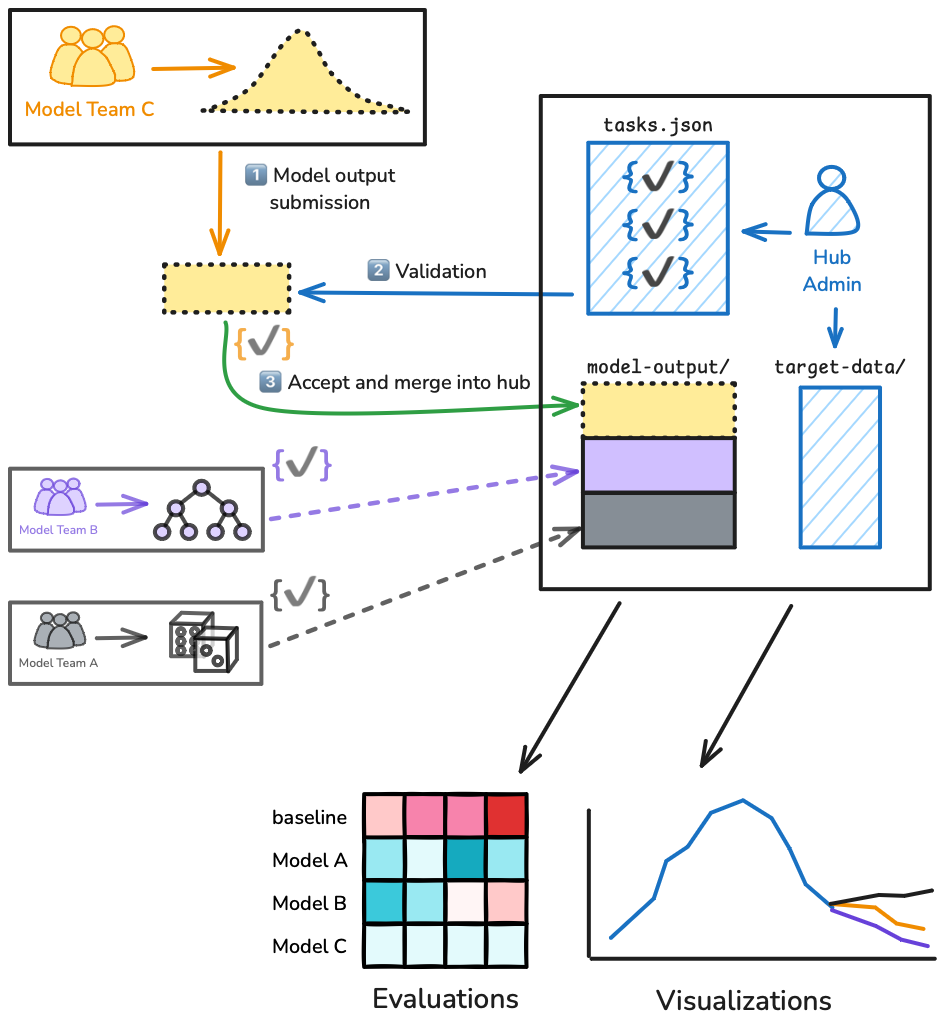Multi-model ensembles
Nowcasting and forecasting of infectious disease dynamics
Ensembles: many forecasts into one

Figure credit: Evan Ray and Nick Reich
Why ensemble?
- Models are specialists and you want all the perspectives
- different data sources
- different philosophies, e.g. more mechanistic or more statistical approaches
- different methodologies and parameterizations
- A single “consensus forecast” is easier for decision-makers to digest
“Whole is greater than sum of parts”
Average of multiple predictions is often (not always) more performant than any individual model
Strong evidence in weather & economic forecasting
Recent evidence in infectious disease forecasting
- Ebola(Funk et al. 2019)
- dengue(Colón-González et al. 2021)
- flu(Nicholas G. Reich et al. 2019)
- COVID-19(Cramer et al. 2022)
Ensemble methods: how to average?
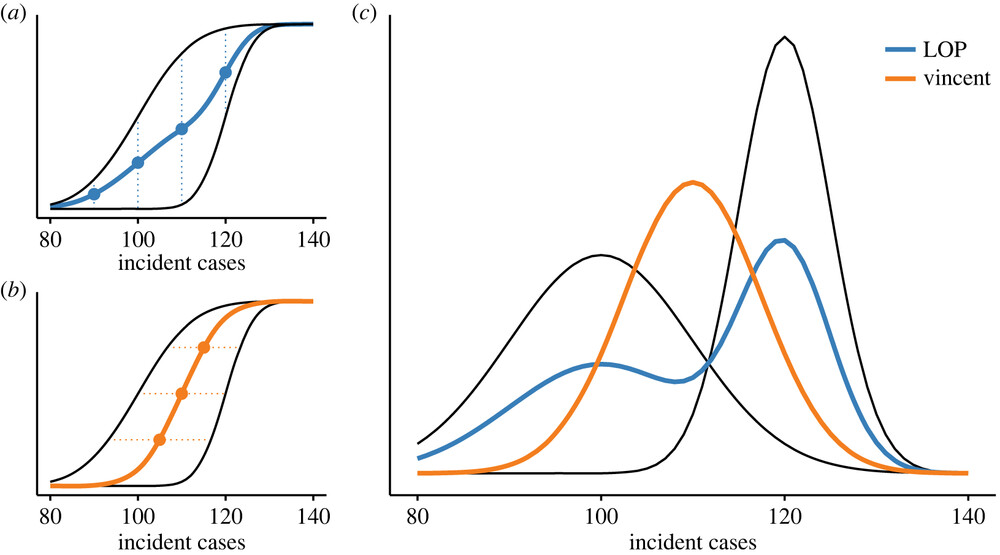
Figure credit: Howerton et al. (2023)
Ensemble methods: to weight or not?
Weight models by past forecast performance
- e.g. using forecast scores
Rarely better than equal average
- lots of uncertainty in weight estimation!
- put a “strong prior” on equal weights, both in your mental and statistical models
Collaborative modelling “hubs”
Projects run by research groups, public health agencies
Participation generally open
Standard format enables
- data validation
- ensemble-building
- model evaluation
- visualization
Hubs increasingly used in epi
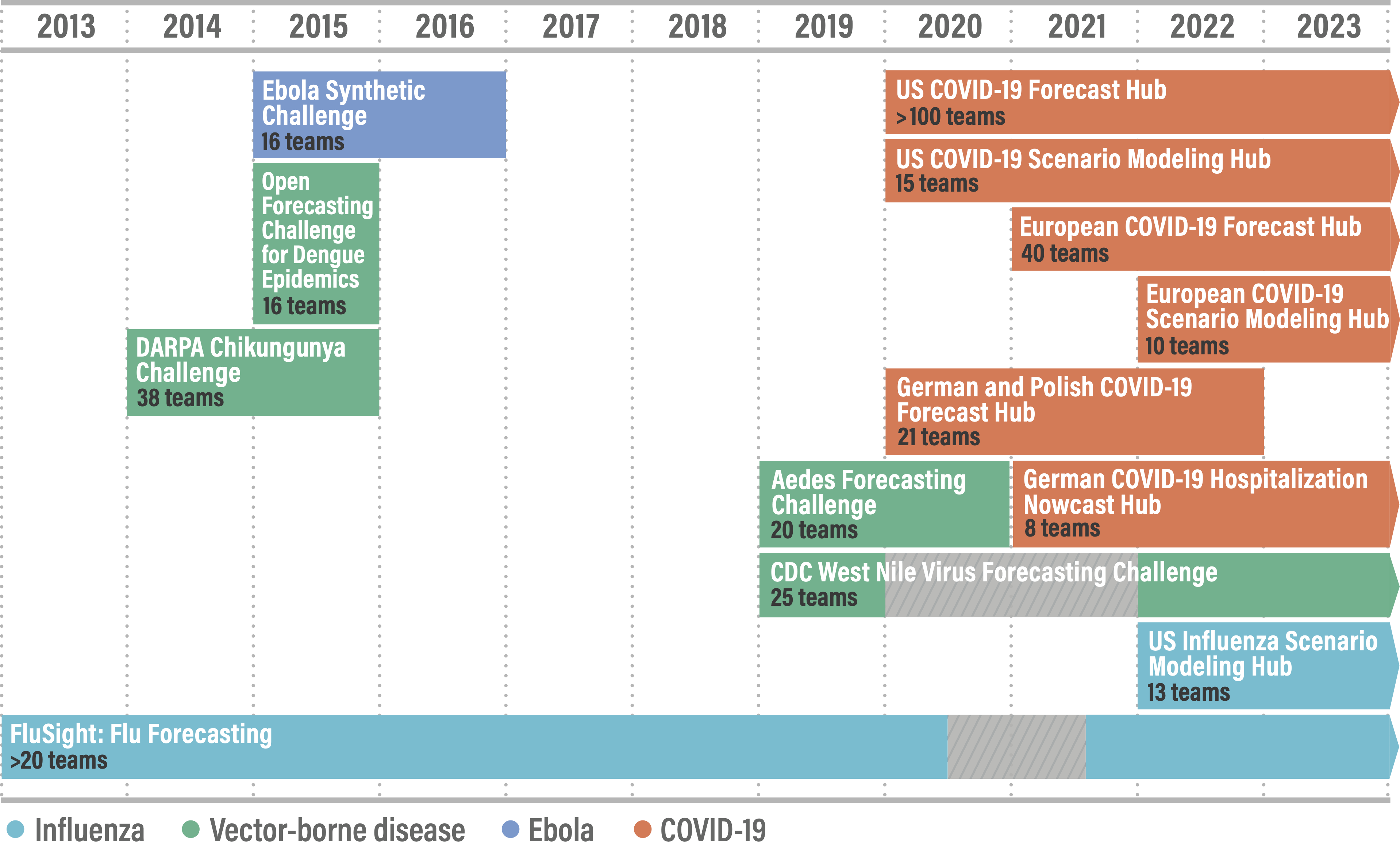
Nicholas G. Reich et al. (2022)
… e.g., the European Respicast Hub
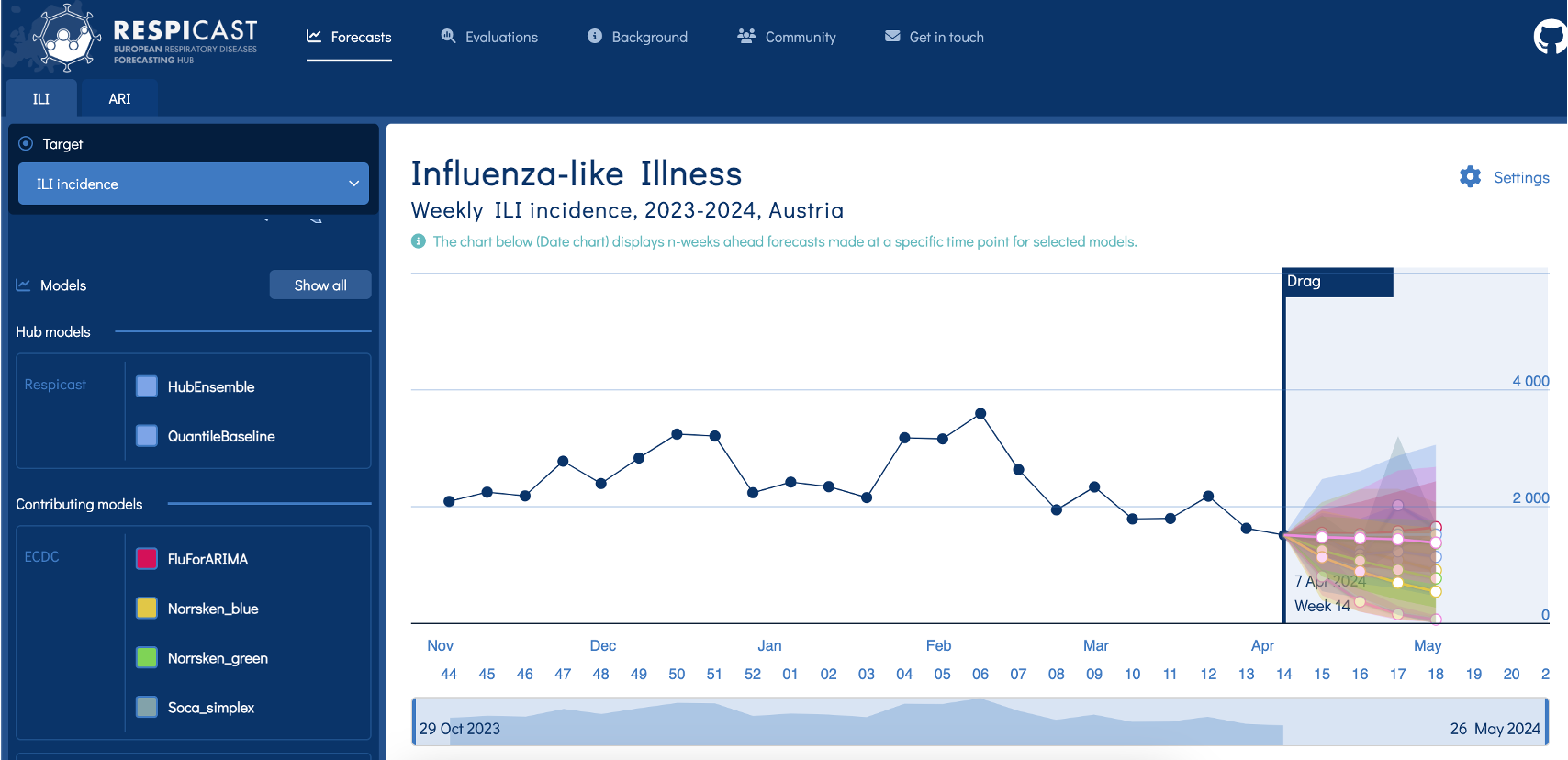
Single model
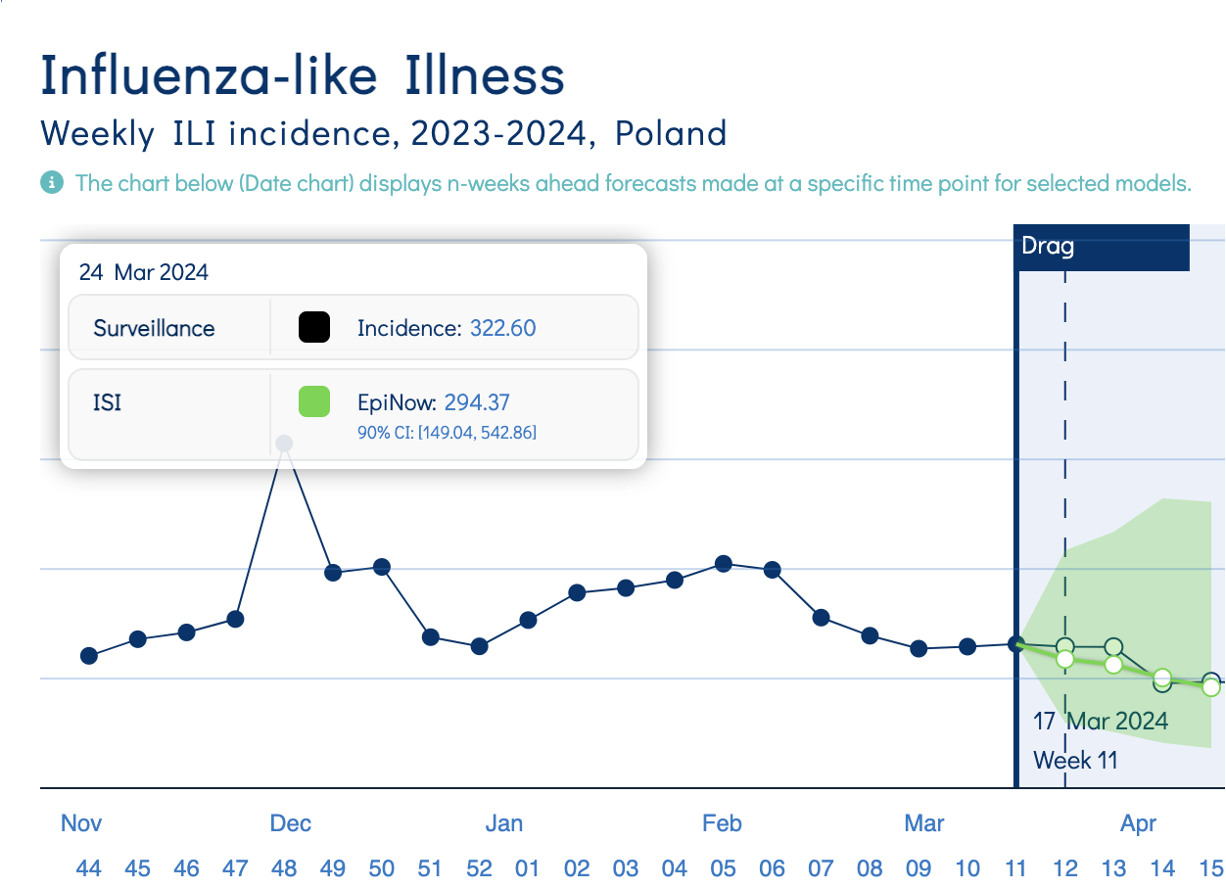
… Multiple models
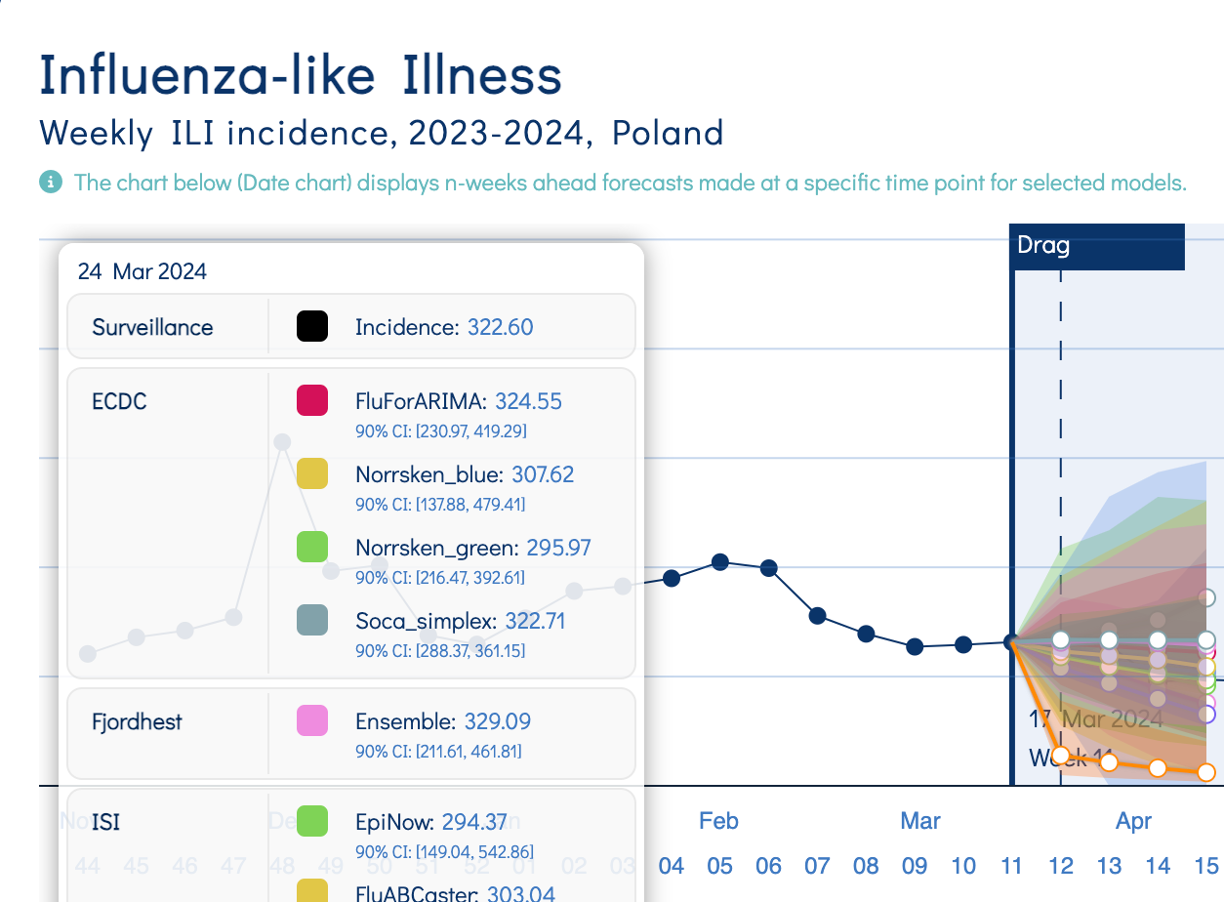
… … Multi-model ensemble
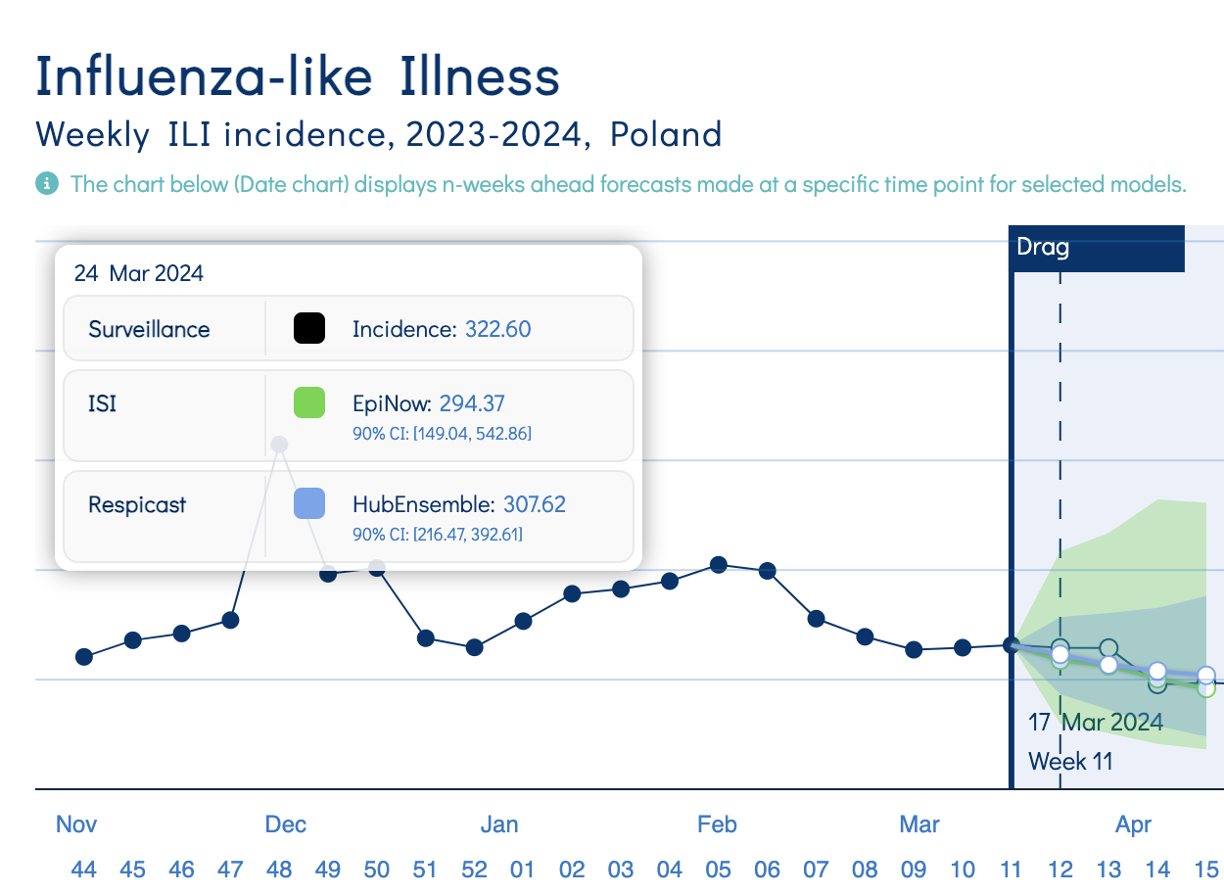
Your Turn
- Create unweighted and weighted ensembles using forecasts from multiple models.
- Evaluate the forecasts from ensembles compared to their constituent models.
References
Colón-González, Felipe J., Leonardo Soares Bastos, Barbara Hofmann, Alison Hopkin, Quillon Harpham, Tom Crocker, Rosanna Amato, et al. 2021. “Probabilistic Seasonal Dengue Forecasting in Vietnam: A Modelling Study Using Superensembles.” PLOS Medicine 18 (3): e1003542. https://doi.org/10.1371/journal.pmed.1003542.
Cramer, Estee Y., Evan L. Ray, Velma K. Lopez, Johannes Bracher, Andrea Brennen, Alvaro J. Castro Rivadeneira, Aaron Gerding, et al. 2022. “Evaluation of Individual and Ensemble Probabilistic Forecasts of COVID-19 Mortality in the United States.” Proceedings of the National Academy of Sciences 119 (15): e2113561119. https://doi.org/10.1073/pnas.2113561119.
Funk, Sebastian, Anton Camacho, Adam J. Kucharski, Rachel Lowe, Rosalind M. Eggo, and W. John Edmunds. 2019. “Assessing the Performance of Real-Time Epidemic Forecasts: A Case Study of Ebola in the Western Area Region of Sierra Leone, 2014-15.” PLOS Computational Biology 15 (2): e1006785. https://doi.org/10.1371/journal.pcbi.1006785.
Howerton, Emily, Michael C. Runge, Tiffany L. Bogich, Rebecca K. Borchering, Hidetoshi Inamine, Justin Lessler, Luke C. Mullany, et al. 2023. “Context-Dependent Representation of Within- and Between-Model Uncertainty: Aggregating Probabilistic Predictions in Infectious Disease Epidemiology.” Journal of The Royal Society Interface 20 (198): 20220659. https://doi.org/10.1098/rsif.2022.0659.
Reich, Nicholas G, Justin Lessler, Sebastian Funk, Cecile Viboud, Alessandro Vespignani, Ryan J Tibshirani, Katriona Shea, et al. 2022. “Collaborative Hubs: Making the Most of Predictive Epidemic Modeling.” Am. J. Public Health, April, e1–4. https://doi.org/10.2105/ajph.2022.306831.
Reich, Nicholas G., Craig J. McGowan, Teresa K. Yamana, Abhinav Tushar, Evan L. Ray, Dave Osthus, Sasikiran Kandula, et al. 2019. “Accuracy of Real-Time Multi-Model Ensemble Forecasts for Seasonal Influenza in the U.S.” PLOS Computational Biology 15 (11): e1007486. https://doi.org/10.1371/journal.pcbi.1007486.
Multi-model ensembles
